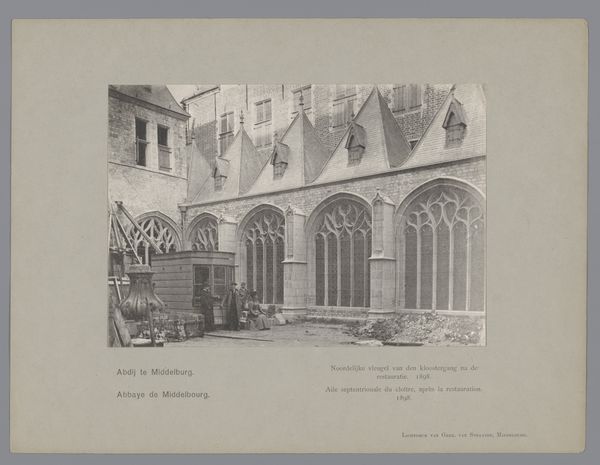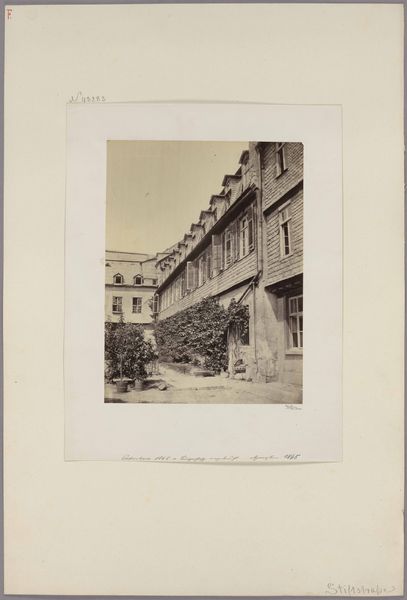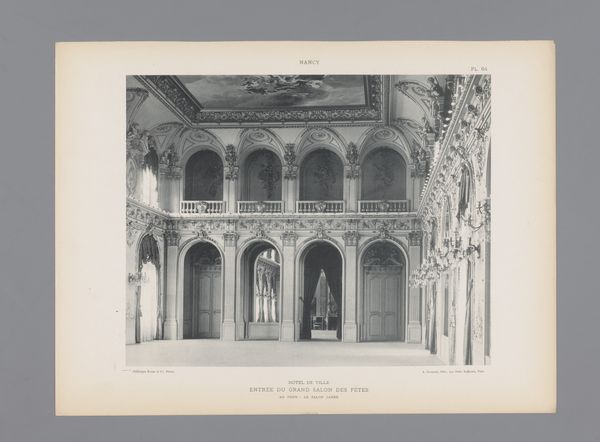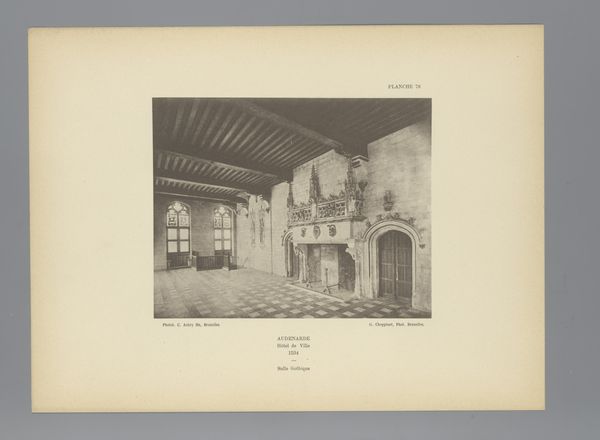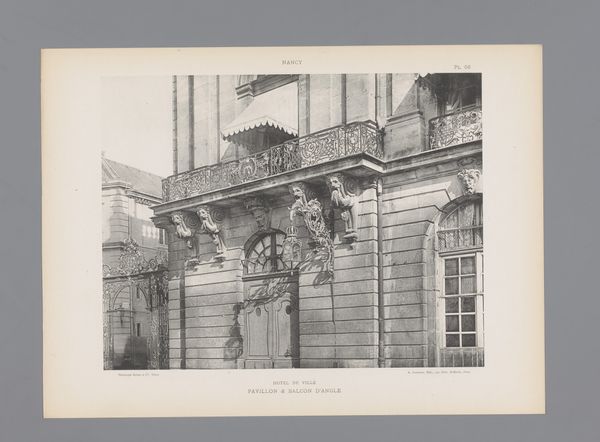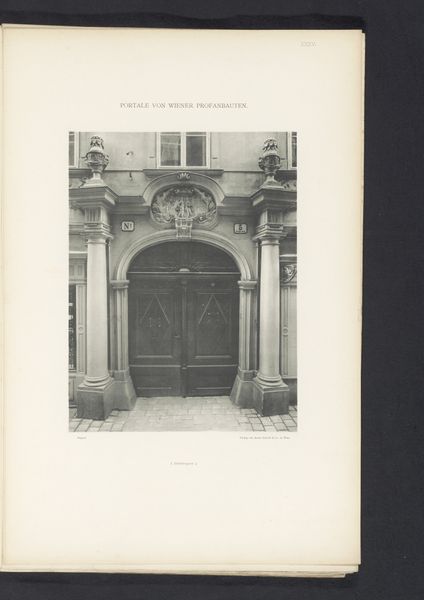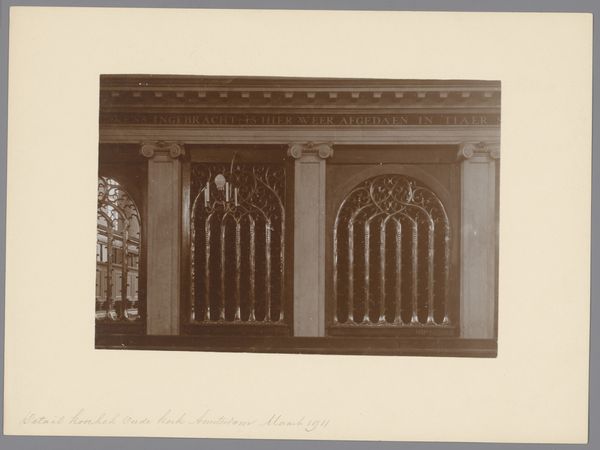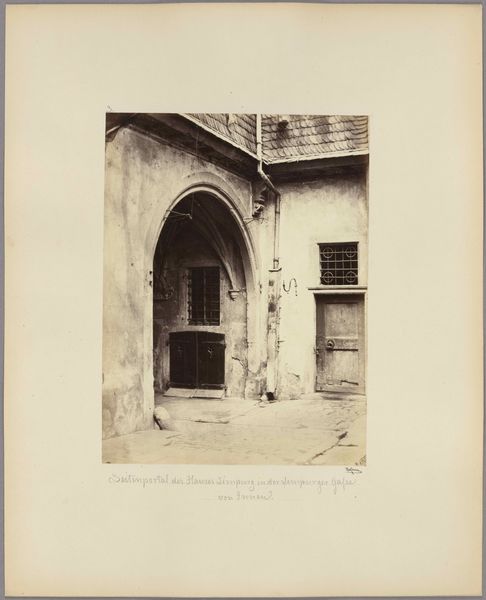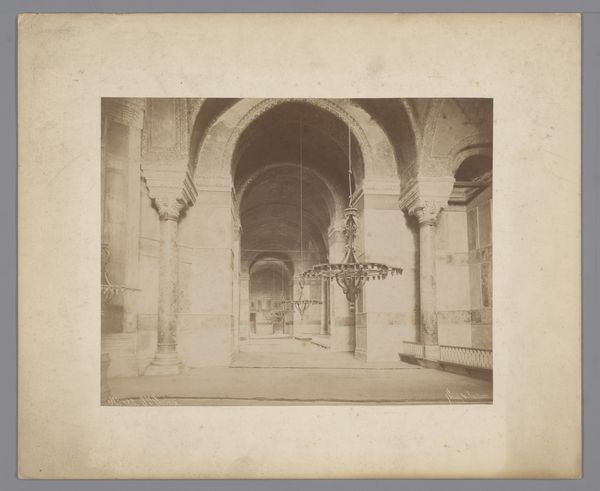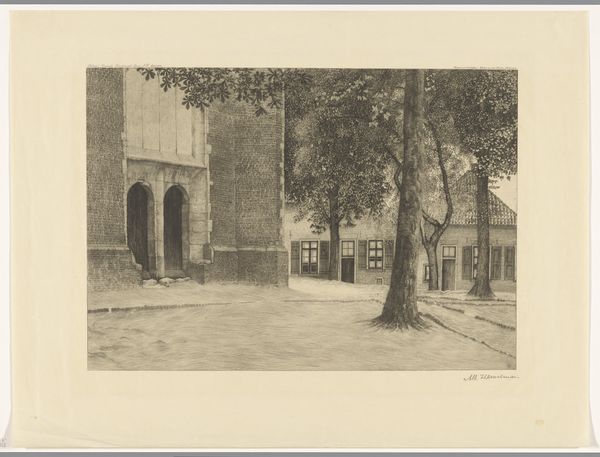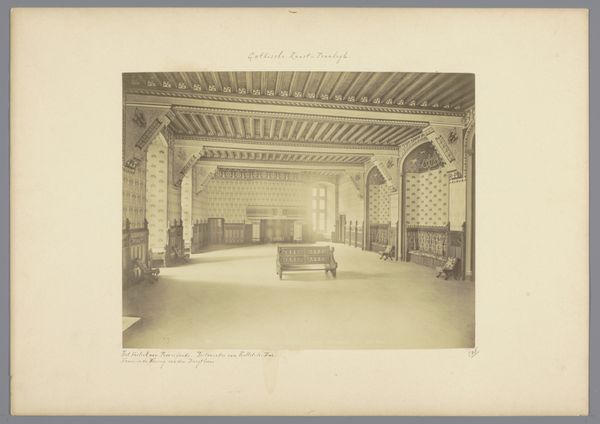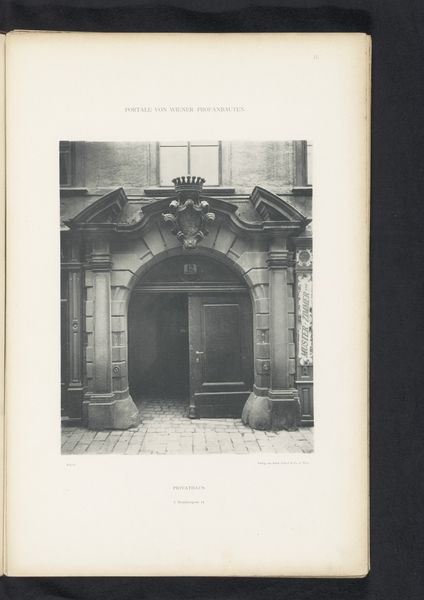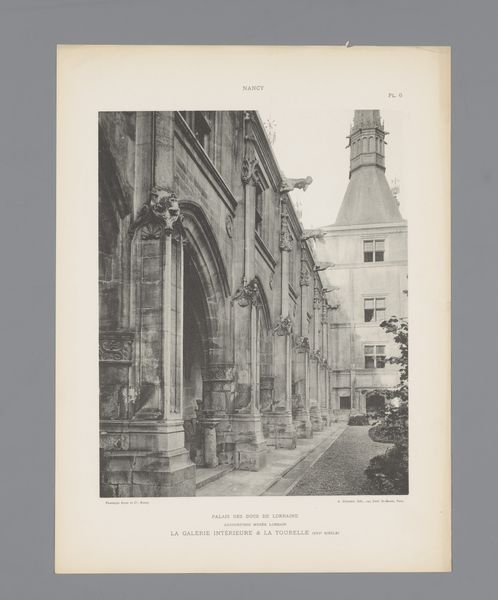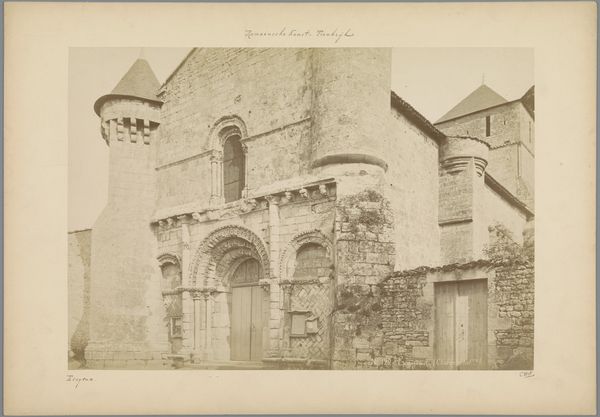
print, etching, photography
#
portrait
# print
#
etching
#
landscape
#
photography
#
cityscape
#
realism
Dimensions: height 311 mm, width 445 mm
Copyright: Rijks Museum: Open Domain
Curator: This is "Binnenplaats van drukkerij Plantijn te Antwerpen" – the courtyard of the Plantin printing house in Antwerp. The work dates from sometime between 1848 and 1908 and is attributed to Joseph Maes. Editor: It’s immediately striking—almost serene. The classical architecture juxtaposed with the uncontrolled ivy suggests a fascinating negotiation between order and nature. Curator: Precisely! Consider Plantin’s legacy—not just as a printer, but as a major figure in the 16th-century book trade. This etching reveals how those historical structures evolved and were subsequently photographed to document cultural sites for future generations. The focus on architectural elements demonstrates material legacy and the way commerce embeds itself within space. Editor: Absolutely. The print freezes this moment, but also speaks volumes about the politics embedded in that industry. Bookmaking wasn’t a neutral endeavor. The circulation of knowledge and ideas—especially during that era of profound religious and political upheaval—held immense power, with huge implications for issues of access and authority. What stories did this printing house tell, and who was allowed to tell them? Curator: Excellent point! Looking closely, the texture rendered via the etching process mimics the worn surfaces of the building. It highlights not just the space, but the labour and consumption intertwined within it, transforming material input like paper and ink into a finished product with tangible, lasting presence. Editor: The composition, too, suggests an intentional commentary. The gaze leads through archways but is somewhat impeded by elements such as shadows. We’re presented with access, but not total access. I keep coming back to what it reveals about access to resources versus obstacles—whether material, gendered, or otherwise. Curator: So well observed. It truly gives a glimpse into the operations and history of a pivotal center of production. It leaves me pondering its place in time, then and now. Editor: Me too. The layers of history embedded in this courtyard—from production to present viewing, across shifts in access—offer rich possibilities.
Comments
No comments
Be the first to comment and join the conversation on the ultimate creative platform.
